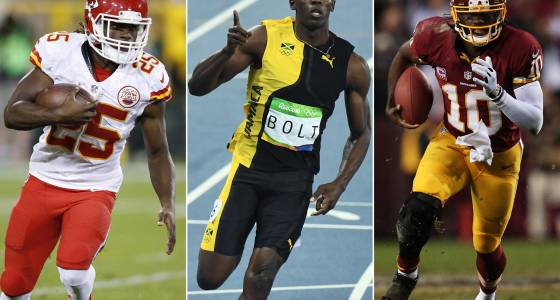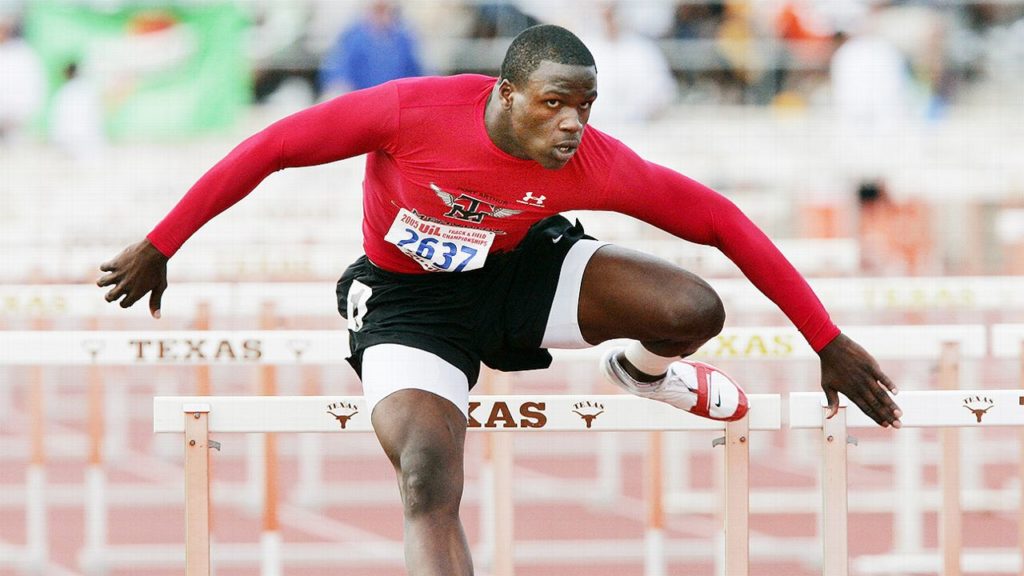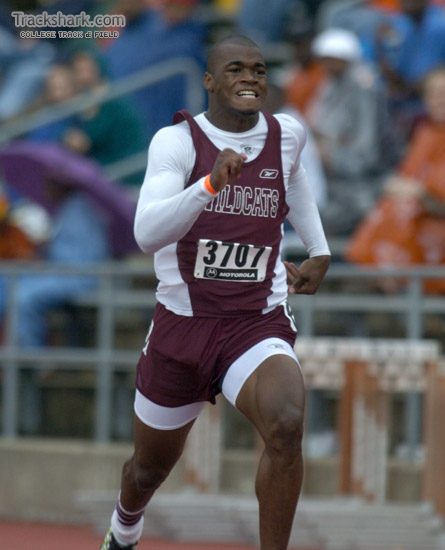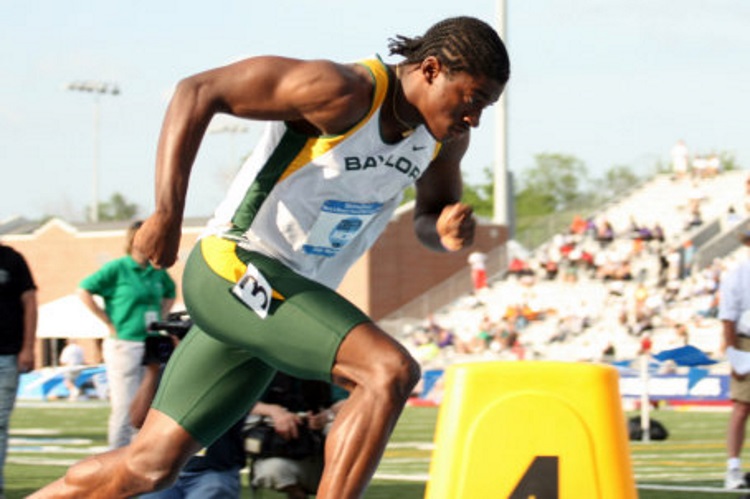Track Speed Translates Into Football Speed

Big, strong, and FAST! These are the characteristics associated with American Football players. The odds of genetically possessing all three of these attributes is very rare and separates the greats from the average players. Each of these traits can be improved through proper training, in theory (you can’t train to grow 6 inches in height). Contrary to the recent trend of sport specialization, Football players can get bigger, stronger, and FASTER playing other sports. I emphasize the word FAST because I will explain the benefits of running track (as a sprinter) to increase your football speed and overall athleticism.
SPEED
Speed is defined as the capacity to perform consecutive movements at a fast rate. No matter the sport you play, the phrase “Speed Kills” applies as a common truth. Speed is created by stimulating a runner’s fast twitch muscle fibers to contract at a fast rate. Creating this stimulus is the biggest benefit of running track, the entire sport is focused on it! Unlike most sports where running is involved in addition to other objectives, track focuses on running as the main objective. Running track can only make you faster, so give it a try!
RUNNING TECHNIQUE
Humans naturally learn how to crawl, walk, then run. Depending on environmental factors and genetic disposal everyone develops their own specific running form. This form is naturally and comfortable for most people, but does not always contribute to performing at their fastest speed possible. Any track coach worth his salt can improve an athlete’s running technique, from the arm movements down to the leg strides. Despite football not being a straight-line sport, that running technique always comes in handy when needing to get to top speed fast on the field, no matter the direction. If you are a player in need of a faster 40-yard dash, just improving your running technique can usually shave .1 of a second off that time, if not more.
STRENGTH AND EXPLOSION
A great thing about running track is the mutual respect for the weight room. Track & Field coaches preach weight lifting as a great way to develop speed. You need a certain amount of strength to move your body, added with flexibility to increase the range of motion of that strength. The time spent working on great starts for Track directly translate great explosiveness in football. Track starts correlate with getting off the line in football and acceleration while running. This type of explosive helps football players reach their top speed much faster.
ENERGY AND ENDURANCE
Spend a few weeks on the track, then return to the football field. You will notice that running for football isn’t as hard as it was before. Yea, it will still kick your butt physically, but you can play a little bit longer, run a little faster? That would be the result of proper running techniques learned on the track. The form learned in track makes you a more efficient runner, which results in less energy used to run. Using less energy while running faster is optimal for success in football. This increased endurance is what separates football players in the 4th quarter. As useless as running 16-100 meter sprints sounds, it is the difference. Learn how to use that technique to your benefit, and I’ll see you in the 4th quarter!
IT’S A PROVEN METHOD
If it ain’t broken don’t fix it. If you read this article and decide that it was a waste of your time, remember this paragraph. In 2016, 332 college players were invited to the NFL combine, 89 percent of who played multiple sports in high school. Half of those players played track per trackingfootball.com. This doesn’t mean running track will get you to the NFL, but if it can only help you, why not?
Notable NFL Players with Track Speed
Jamaal Charles – Running back

Photo Credit: Jamaalcharles25.com
Charles completed his only collegiate track season in 2006 as a four-time All-American (60 m indoor, 100 m outdoor, 200 m outdoor, 4 × 100 m relay outdoor). Charles has been selected to 4 NFL Pro Bowls, 4 All-Pro Teams, and was the NFL rushing touchdowns leader in 2013.
Adrian Peterson – Running back

Photo: Trackshark.com
In high school at the 2004 District 14-4A Texas Championships, Peterson participated on the Palestine 4×100 m relay team, helping them to victory with a time of 41.50 seconds. Peterson has stated that his personal-best times are 10.19 seconds in the 100 meters, 21.23 seconds in the 200 meters 200 and 47.6 seconds in the 400 meters. Peterson did not participate in track & field during college to focus on football. Peterson has been selected to 7 Pro Bowls, 7 All-Pro Teams, and was named the NFL’s Most Valuable Player in 2012.
Robert Griffin III – Quarterback

Photo Credit: Pro Football talk
As a high school junior, Griffin received the Gatorade Texas Boys Track and Field Athlete of the Year award, and was selected to USA Today’s 2007 All-USA Track and Field team. In his single season as a college track & field participant, Griffin was an All-American in the 400 m hurdles. Griffin was selected as the NFL Offensive Rookie of the Year in 2012, as well as the Pro Bowl team.